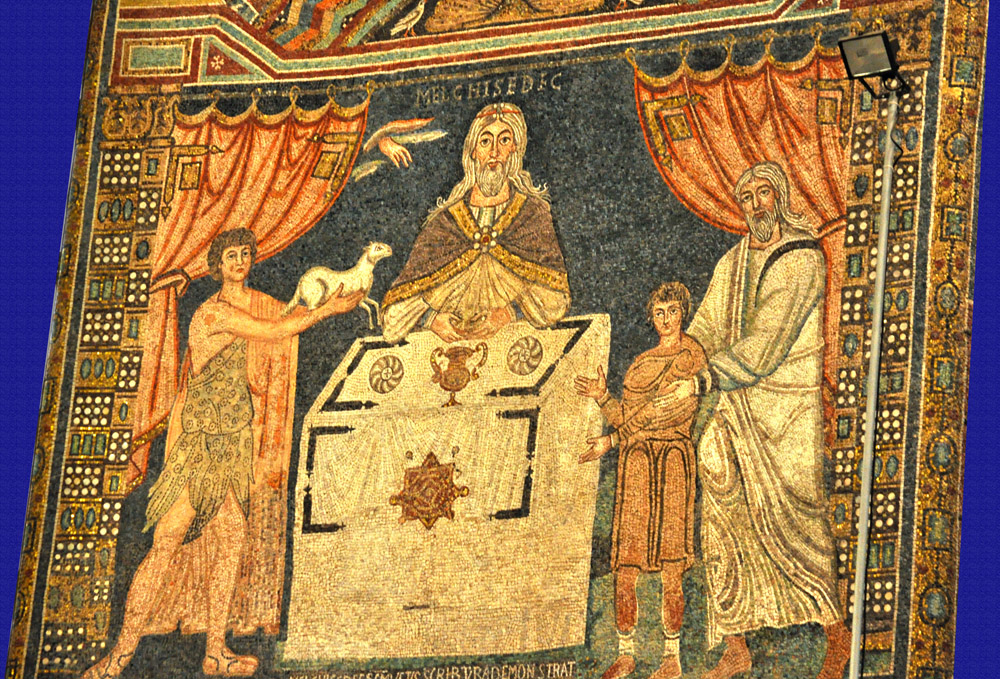The Sacrifices of Abel, Melchizedek, and Abraham

7th century
Mosaic
Church of Sant'Apollinare in Classe, Ravenna, Italy
As in the Abel-and-Melchizedek mosaic in nearby San Vitale, Abel wears a tunica pellicea, a tunic of skin or leather, like the ones that God made for his parents. But over this reminder of the Fall he wears a priestly chasuble such as seen on images of Ravenna's bishops (example). Melchizedek goes him one better with an example of the kind of mantle worn in early images of Aaron and Caiaphas. Abraham's vestment has at least one of the purple shoulder-to-hem stripes worn by Roman senators (example).
The altar is modeled on the San Vitale mosaic, with an eight-pointed star on the altar cloth and a two-handled chalice between two round loaves, each with a cross inside a swirly pattern. This mosaic also follows San Vitale by using a hand in the sky to represent God's acceptance of the gifts.
Abel offers a lamb, Melchizedek bread and wine, and Abraham his own son, Isaac. All three offerings are traditionally taken as types of Christ, the victim offered on the Cross and in the sacred liturgy. As at San Vitale, the wine on the altar is in a kantharos, a symbol of resurrection/immortality seen in images related to Christian baptism. (See the page on those images.)
View this image in full resolution.
Read more about images of Abel.
Read more about images of Melchizedek.
Read more about images of Abraham.
Photographed at the church by Richard Stracke, shared under Attribution-NonCommercial-ShareAlike license.